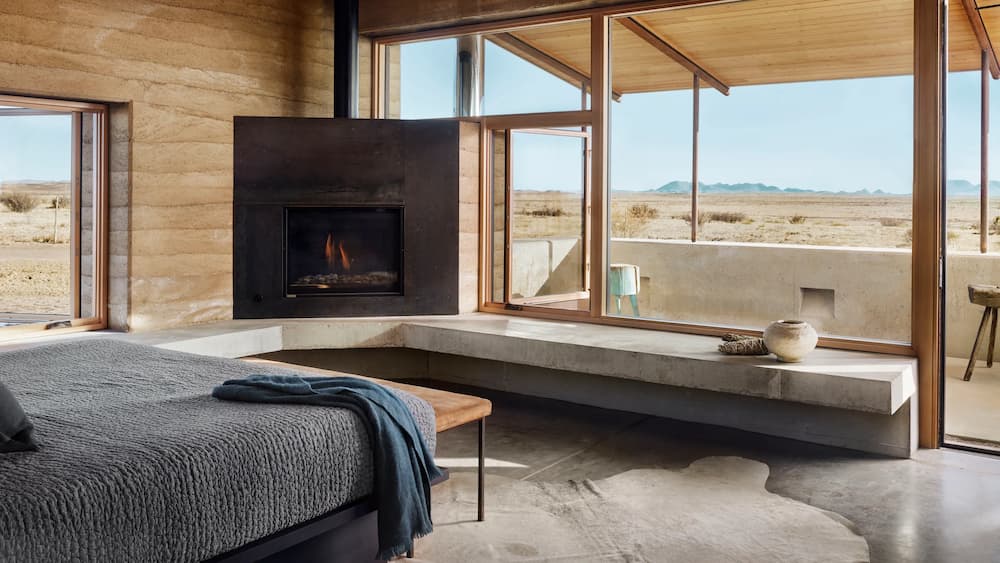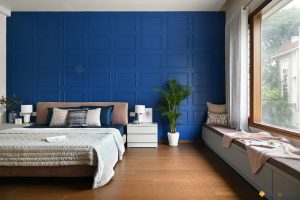A Guide to Minimalistic Wallpapers for Contemporary Homes

In an age of clutter and consumerism, there’s a growing desire to return to the basics, to embrace simplicity. This trend has made its way into home décor, with minimalism reigning supreme. But how do you strike the perfect balance between simplicity and style? Enter the world of customized wallpaper. When you consider wallpaper for room design, it’s not just about vivid patterns or bold statements. Minimalistic wallpapers can breathe life into a space without overwhelming it. Let’s delve deeper.
Understanding the Essence of Minimalism
Minimalism is not about having less; it’s about making room for more of what matters. In terms of décor, it focuses on decluttering spaces, keeping only essentials, and using muted color palettes. The goal is to create a room that feels spacious, cohesive, and serene.
Choosing the Right Minimalistic Wallpaper
- Neutral Tones: Minimalism often leans towards neutral colors like whites, beiges, and grays. A customized wallpaper in these shades can offer a clean and understated backdrop.
- Subtle Patterns: Instead of loud designs, opt for gentle patterns. Think soft lines, muted geometrics, or even watercolor washes.
- Nature-Inspired Designs: Embracing the beauty of nature, be it through delicate leaf patterns or expansive sky prints, can be both minimalistic and calming.
- Texture over Design: Sometimes, a plain textured wallpaper can do the trick. The depth and tactile nature of the wallpaper add interest without distracting from the room’s essence.
Customized Wallpaper: Making Minimalism Personal
With the ability to choose customized wallpaper, you can bring in personal elements while sticking to a minimalistic theme. Maybe it’s a soft sketch of your favorite cityscape or a grayscale image of a cherished memory. When considering wallpaper for room makeovers, think of ways to infuse personal touches subtly.
Benefits of Minimalistic Wallpapers
- Timelessness: Minimalistic designs rarely go out of style. They have a timeless appeal, ensuring your space feels contemporary for years.
- Versatility: Such wallpapers easily blend with varied furniture types and decor pieces, allowing for easy updates or changes to the room without needing a complete overhaul.
- Ambiance: Minimalism aims to create peaceful and harmonious spaces. The right wallpaper can accentuate this ambiance, making rooms feel more open and airy.
The Philosophy Behind Minimalistic Design
At its core, minimalism isn’t just an aesthetic; it’s a philosophy. The idea is rooted in the concept of ‘less is more.’ It’s about stripping away the unnecessary, making conscious choices, and placing value on quality over quantity. The aim is to cultivate spaces that promote peace, clarity, and genuine contentment.
Historical Context: The minimalistic movement in design began in the 20th century as a response to the excessive ornamental details of the previous eras. It drew inspiration from traditional Japanese design, which emphasizes simplicity, clarity, and functionality. Over the decades, minimalism has been adapted, refined, and redefined, evolving into the nuanced design approach we recognize today.
Emotional Resonance: Beyond the tangible benefits, minimalism has emotional and psychological advantages. Cluttered spaces can often lead to cluttered minds. A room adorned with minimalistic wallpaper and design can evoke feelings of tranquility, reducing anxiety and promoting a sense of well-being.
Integrating Minimalism with Other Design Principles
Minimalism doesn’t have to stand alone. It can be seamlessly integrated with other design principles to create hybrid styles that are both unique and harmonious.
Scandinavian Minimalism: This combines the simplicity of minimalism with the warmth and functionality of Scandinavian design. Think customized wallpaper with muted earthy tones, paired with varied wooden furniture and soft textiles.
Industrial Minimalism: Here, the raw, unfinished charm of the industrial style meets the refined elegance of minimalism. Imagine wallpapers with soft concrete textures or muted metallic patterns.
Boho Minimalism: A fusion of the free-spirited bohemian style with minimalistic principles. Wallpapers might feature soft, abstract patterns in earthy hues, paired with handmade artifacts and greenery.
Factors to Consider When Choosing Minimalistic Wallpaper
- Room Size and Lighting: Lighter wallpapers can make a small room appear larger. Additionally, consider how the wallpaper might look under different lighting conditions – natural daylight versus nighttime artificial lighting.
- Existing Decor: Your wallpaper should seamlessly blend with the room’s existing decor. This ensures cohesiveness and a balanced aesthetic.
- Purpose of the Room: A bedroom might call for softer, calming designs, while a study or home office might benefit from something more energizing, yet still simple.
- Personal Aesthetics: While minimalism has its guidelines, it’s crucial to ensure that the chosen design resonates with personal tastes. After all, it’s a space where you’ll spend considerable time.
Tips for Complementing Your Wallpaper
Once you’ve selected the perfect customized wallpaper for your room, consider these tips to enhance the overall minimalistic ambiance:
- Furniture: Opt for functional, high-quality pieces that align with the color palette of the wallpaper.
- Accessories: While minimalism leans towards fewer accessories, strategically placed items like a statement lamp or a singular piece of art can elevate the room.
- Greenery: Plants can breathe life into a minimalistic room, adding a touch of nature and vibrancy without overwhelming the space.
Conclusion – Extended
The journey of integrating minimalism into one’s living space is both exciting and enlightening. It urges one to pause, reflect, and prioritize. Through the careful selection of customized wallpaper for room transformations to thoughtful choices in decor and accessories, minimalism offers a pathway to intentional living and design. It serves as a reminder that, often, beauty lies in simplicity, and tranquility can be found in decluttered spaces. As you embark on this journey, let each choice be a reflection of individuality, and let each space be a sanctuary of peace and authenticity.
Frequently Asked Questions (FAQs)
Can I use bold colors in minimalistic wallpapers?
While minimalism often leans towards muted tones, a splash of a bold color, if used judiciously, can enhance the design without overpowering it.
How do I choose between matte and glossy finishes for minimalistic wallpapers?
Matte finishes typically align better with minimalism, offering a smooth, non-reflective surface. However, a slight gloss in a subdued design can add a touch of luxury.
Where can I get customized wallpaper for room makeovers?
Many online and physical stores offer customization options, allowing you to select or even create designs that resonate with your personal style.
Can minimalistic designs work in kids’ rooms?
Absolutely! With the right design, minimalism can create a calming and focused environment for children, which can be especially beneficial for studying and relaxation.
How can I ensure my minimalistic design doesn’t feel cold or impersonal?
Incorporate elements that resonate with personal tastes, whether it’s through the choice of customized wallpaper, the addition of cozy textiles, or personal mementos.
How often should I update or change minimalistic wallpapers?
One of the benefits of minimalism is its timeless appeal. However, if you feel the need for a refresh or if personal preferences evolve, updating every 5-7 years is a general guideline.
To read about Space Optimization Strategies to Unlock the Full Potential of Your Small Kitchen click here.



